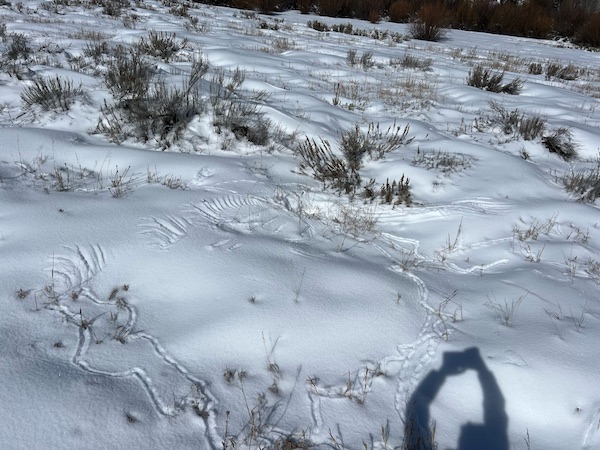BY HARRY WEEKES
There are many flight scenes that simply don’t get enough attention. You might think I am talking about each and every scene from both of the Top Gun movies, but I’m not. (For such discussions, find me any time you see me and we can talk Tom Cruise.)
The flight scenes I am talking about are the simple, the obvious, the observable—every time a bird flutters, flits, or floats through your world. This might be songbirds darting through the trees. It might be hawks soaring overhead. It might be great skeins of geese pointing their way through the sky.
Unless you are younger than about 6, when any of the above happens, you generally do not stop, point, look around excitedly, and bounce and yell and say things like, “Did you see that?! Did you see that?! That thing is flying!”
We take for granted that the great majority of birds fly. We take this for granted so much that we don’t stare in total awe and amazement—birds FLY. They flap their little wings (or their big ones), take to the air, and generally do their bird thing.
Well, I had two occasions that brought the wonder of flying into perspective, one from each side of the flying spectrum.
At the mouth of Indian Creek, in that beautiful full light before sunset, a songbird of some kind and a small raptor (I am thinking it was a Cooper’s hawk) cut across the sky in an aerial and acrobatic display that was nothing short of mind-boggling.
In the two seconds they flew through my visual field, the birds flew flat out, darting, dipping, dodging, and a whole bunch of other d-words. One bird was flying for its life. And so was the other one. They disappeared into the trees at top speed before the words “What the….” even formed in my mind.
While I know a bit about birds and their anatomy, seeing this display let me know that I have absolutely no sense how this works in reality.
On the other side of the flying spectrum was coming across the convoluted path of what was probably a vole walking on the snow. Cutting through the middle of the vole’s trail, left as impressions in the snow, were the wing tips and talon tracks of what I believe to be a great horned owl. Played out in a space of about 10 square feet on the top of the snow was something that I did not see, but guess went like this: From the distant trees a great horned owl spotted a vole walking on the snow. It was close to the new moon, meaning there was as little light as possible. The stars must have been twinkling. The owl fell out of the tree, and on silent wings, cut across the meadow before hitting the snow and capturing the vole.
On one side—daylight, high-speed flying, immediate movement, both evasive and intentional; on the other side—nighttime, low speed and quiet, the movement direct and piercing.
In neither case do I have any idea what happened. I did not see if the songbird or the raptor won, nor was there any evidence of the outcome of the owl and the vole.
What I do know is that, beyond a cartoon sense of events and the functioning of bodies and their systems, I have no idea how this works.
Science fiction writer Arthur C. Clarke once said, “Any sufficiently advanced technology is indistinguishable from magic.”
And there they are… the birds. Magic on the wing.
Harry Weekes is the founder and head of school at The Sage School in Hailey. This is his 52nd year in the Wood River Valley, where he lives with Hilary and one of their three baby adults—Simon. The other members of the flock are Georgia and Penelope (Georgia recently fledged from Davidson College in North Carolina and Penelope is at Middlebury College in Vermont).

